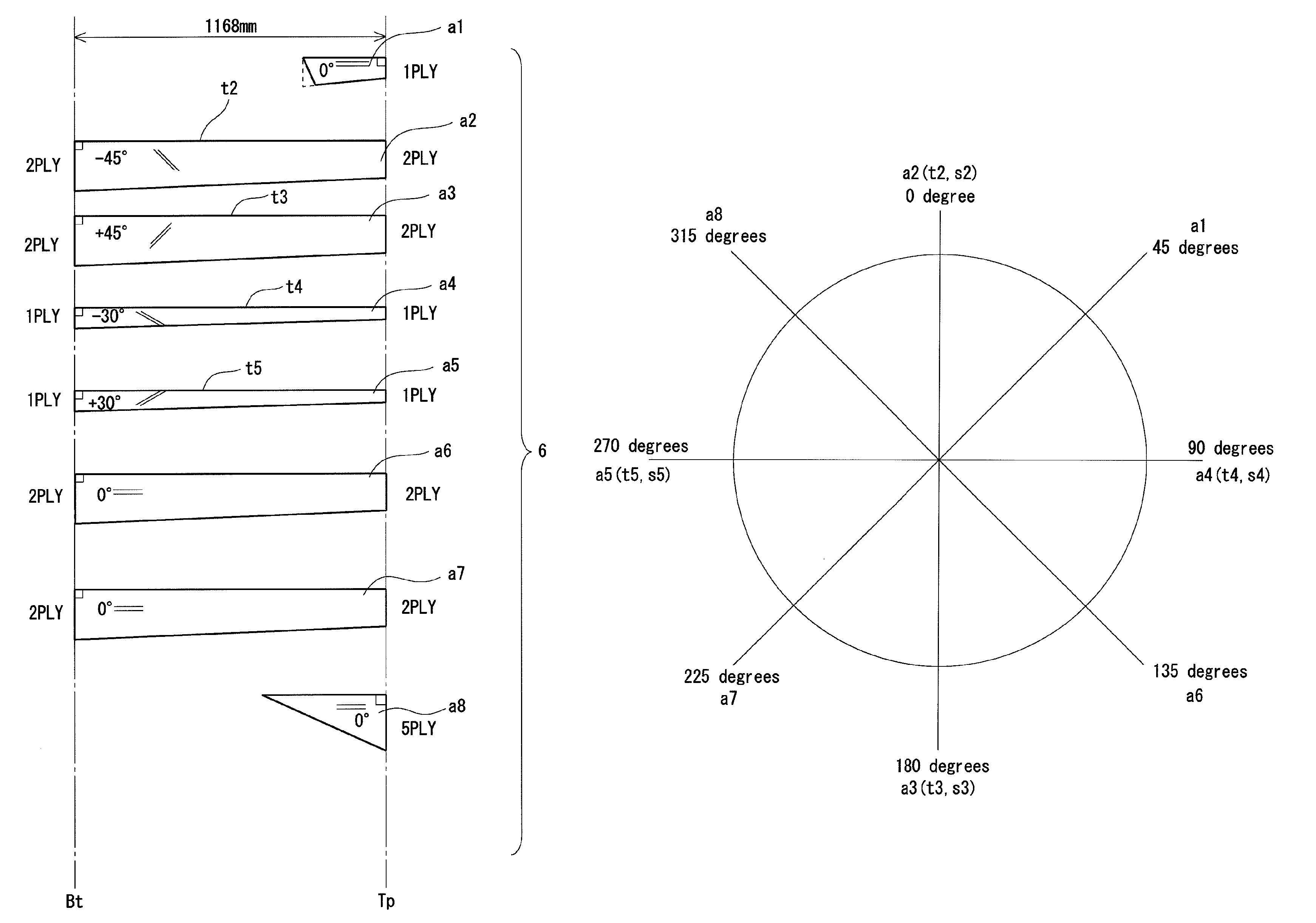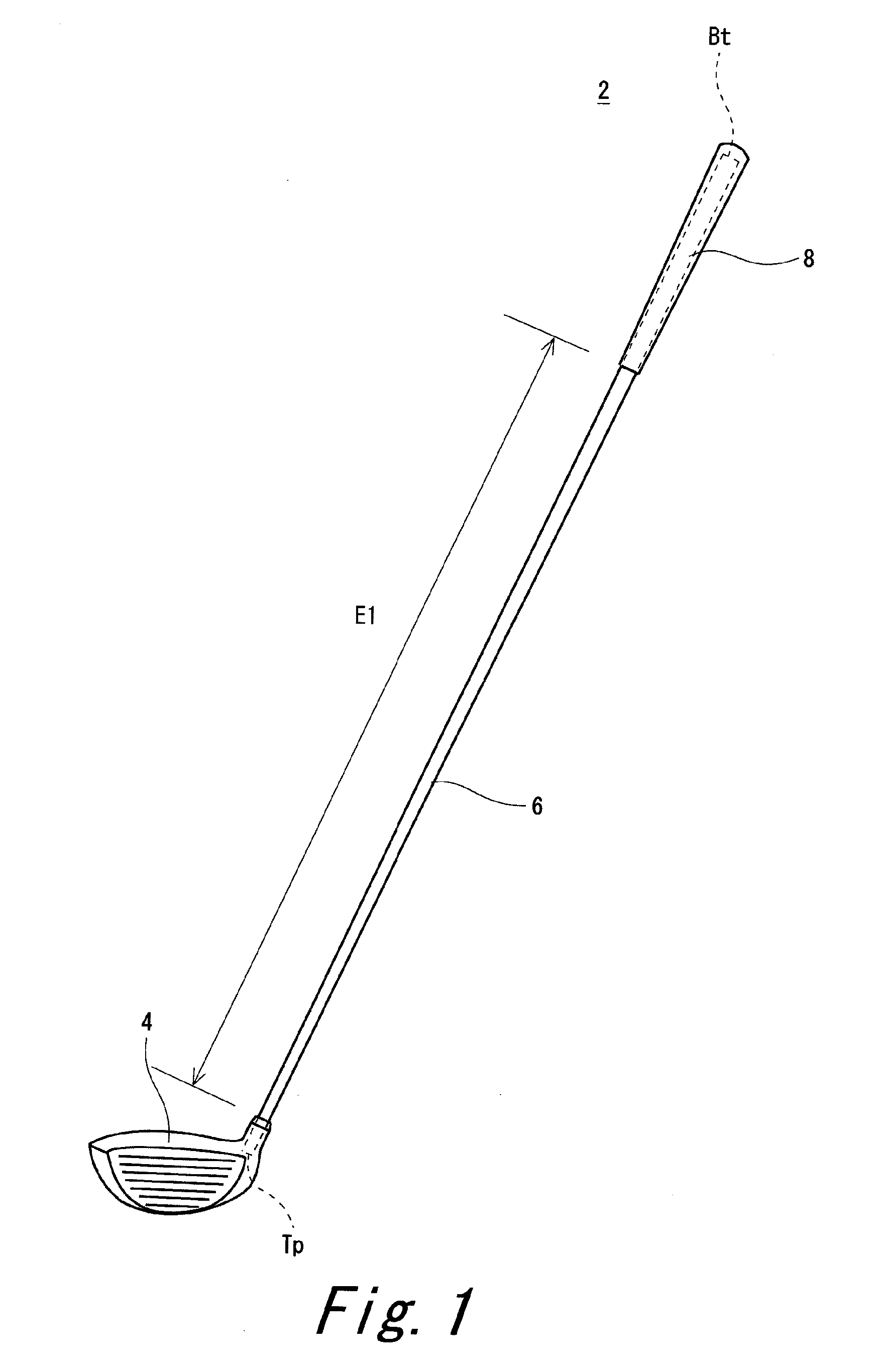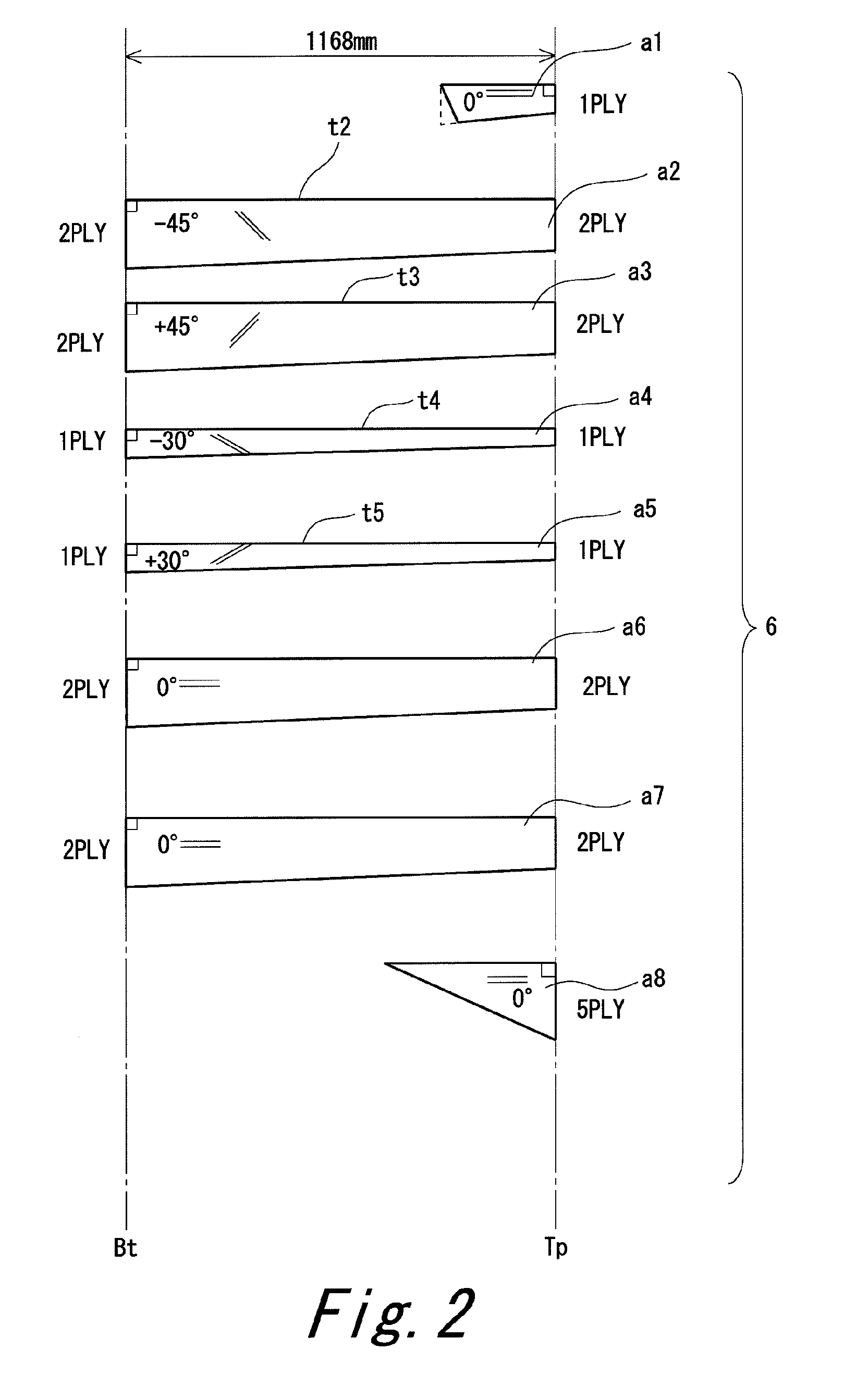Golf club shaft
a golf club and shaft technology, applied in the field of golf club shafts, can solve the problems of circumferential variation and variation in flexural rigidity
- Summary
- Abstract
- Description
- Claims
- Application Information
AI Technical Summary
Benefits of technology
Problems solved by technology
Method used
Image
Examples
example 1
[0147]A shaft having the same laminated constitution as that of the above-mentioned first embodiment (shaft 6) was produced. Sheets shown in FIG. 2 were obtained by the cutting process. The sheets were laminated as shown in FIG. 3. That is, a base sheet a2 and a base sheet a3 were laminated so that the base sheet a2 and the base sheet a3 were deviated for 180 degrees (±15 degrees) in a circumferential direction, to obtain an united sheet a23. An adjusting sheet a4 and an adjusting sheet a5 were laminated so that the adjusting sheet a4 and the adjusting sheet a5 were deviated for 180 degrees (±15 degree) in the circumferential direction, to obtain an united sheet a45. The winding start position of the united sheet a23 and the winding start position of the united sheet a45 were made to differ by 90 degrees in the winding process. As these results, the constitution of bias layers as shown in FIG. 5 was obtained. The winding start positions of the eight sheets were dispersed in eight po...
example 2
[0148]Laminating was performed as shown in FIG. 6. That is, four bias sheets a2, a3, a4, and a5 were laminated, to obtain an united sheet. The united sheet was wound to obtain a laminated constitution shown in FIG. 7. Winding start positions were dispersed in eight positions at intervals of 45 degrees. The winding start positions of the sheets were substantially made equivalent to those of FIG. 4. A shaft of example 2 was obtained in the same manner as in example 1 except for above. The laminated constitution of the shaft of example 2 and a trade name of a prepreg used are shown in the following Table 1. The evaluation results of the shaft are shown in the following Table 3.
example 3
[0149]A shaft of example 3 was obtained in the same manner as in example 1 except that the fiber angle Af of an adjusting sheet was changed to ±25 degrees from ±30 degrees. The laminated constitution of the shaft of example 3 and a trade name of a prepreg used are shown in the following Table 1. The evaluation results of the shaft are shown in the following Table 3.
PUM
 Login to View More
Login to View More Abstract
Description
Claims
Application Information
 Login to View More
Login to View More - R&D
- Intellectual Property
- Life Sciences
- Materials
- Tech Scout
- Unparalleled Data Quality
- Higher Quality Content
- 60% Fewer Hallucinations
Browse by: Latest US Patents, China's latest patents, Technical Efficacy Thesaurus, Application Domain, Technology Topic, Popular Technical Reports.
© 2025 PatSnap. All rights reserved.Legal|Privacy policy|Modern Slavery Act Transparency Statement|Sitemap|About US| Contact US: help@patsnap.com



